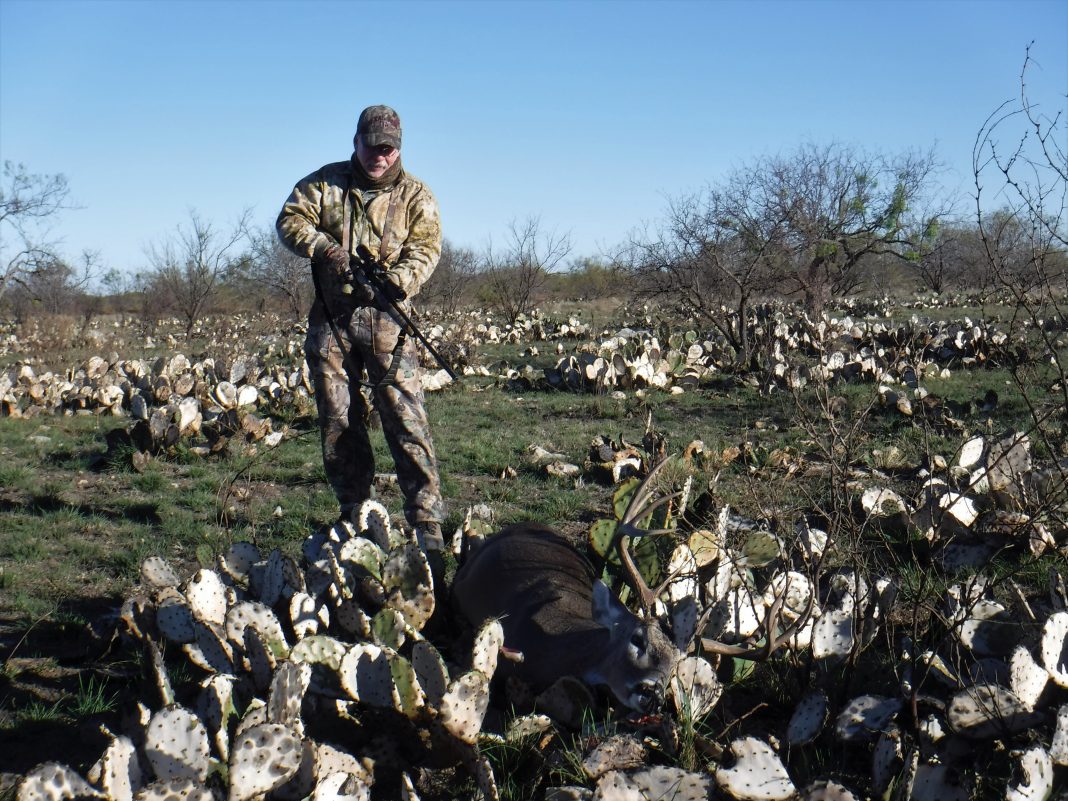The Texas deer hunting forecast is always exceptional, even in years such as this when dry, hot conditions take over in the late spring and through the summer, leading to concerns about how the season will shape up as range conditions seemingly deteriorate by the day, if not the hour.
The Texas Outdoor Digest spoke to Alan Cain, whitetail program leader for the Texas Parks & Wildlife Department, to glean some insight into how this fall and winter will shape up for both quantity and quality in the Lone Star State.
Here’s the Texas white-tailed deer hunting outlook for 2019-20.
“It’s going to be another great hunting season for most of the state. We’ve had great rainfall from last winter all the way up through early summer across the state so the habitat conditions have been really good,” Cain said. “There were a lot of good forbs still around and deep soil moisture so that will help keep the brush green and help finish off antler development. So I’m expecting good antlers as a whole at the statewide level. Last year it got hot and dry during the summer so it was about average as far as antler quality across the board.”
Cain noted that the overall deer figure remains strong, continuing to hover above the 4 million mark.
“Our population trend statewide has been gradually creeping up every year, especially in places like the Hill Country,” Cain said. “That means more chances for hunters to fill their tags, which is a good thing for them and good for the overall population numbers.”
Cain said that conditions last fall and winter were conducive to a somewhat lower harvest.
“Harvest was down a bit last season but that’s attributed largely to all the rain we got in September and October,” Cain said. “It greened up so the deer just weren’t as visible; it was like that in much of South Texas all the way into February. Those conditions would suppress the harvest some but that also means you’re going to have a good carryover of animals for this fall and winter.
“Statewide, the overall harvest estimate was about 883,000 total, which is down compared to the previous year of about 918,000, so again we’re going to see a good carryover of some of those better bucks.”
In terms of quality, Cain noted that hunters across the state certainly should have a shot at some better whitetail bucks.
“There should be an increase in 5-, 6- and 7-year-old bucks at the statewide level,” Cain said. “Those are deer in the prime of their life and so we should see more of those bucks relative to the other age classes out there. We had good fawn crops back in 2012 and 2013 relative to other years so there should be some better deer out there as a result. I would expect some pretty amazing bucks to come out of the woods this year. I think anyone would be happy to see that kind of buck anywhere in the state.”
Cain said that deer management has been beneficial to hunters taking better bucks in recent seasons. He noted that the majority of the bucks taken are in the 3½- or 4½-year-old age class, but roughly 15% of the overall buck harvest are composed of older deer, ones that are 5½ years old or older. He also pointed to antler restrictions in place in more than 100 counties as being beneficial to letting deer get more age to them.
While the overall hunter figure has remained right around 700,000 in most seasons, Cain noted that TPWD is always looking to expand hunting access.
“Something new this year is additional hunting opportunities in portions of 21 counties in the South Central part of the state. We opened up a four-day doe season that week of Thanksgiving so hopefully that gives folks more opportunities. Along with that is mandatory harvest reporting for those deer taken in those areas (during archery, muzzleloader, youth-only seasons, and the four-day doe season).”
The counties include: Austin, Bastrop, Caldwell, Colorado, Dewitt, Fayette, Gonzales, Guadalupe, Karnes, Lavaca, Lee, Waller, Washington, and Wilson. In addition to these counties, Goliad, Jackson, Victoria, and Wharton counties north of U.S. Highway 59 and Comal, Hays, and Travis east of IH-35. The bag limit on antlerless deer in these counties is two. The four-doe days are not for properties enrolled in the Managed Lands Deer Permit (MLDP) program.
Cain noted that the decision to liberalize harvest restrictions on antlerless deer comes after several years of whitetail population growth within these ecoregions, combined with a relatively conservative doe harvest.
TPWD is also expanding doe days in 20 other counties from four to 16 days beginning with the start of the general hunting season on Nov. 2. Those counties include: Bell (east of IH 35), Burleson, Delta, Ellis, Falls, Fannin, Franklin, Freestone, Hopkins, Hunt, Kaufman, Limestone, Milam, Navarro, Rains, Smith, Titus, Van Zandt, Williamson (east of IH 35), and Wood.
“It’s always tough to predict exactly how the season will play out ahead of time, but things are all looking good for us to have another great season across the state,” Cain said. “The usual hot beds like the Edwards Plateau and South Texas will always have good hunting, but with the days added to the season, we should see more folks getting out there.”




















